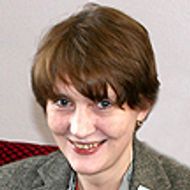RESEARCH AREA
Childhood, parenthood, developmental environments, educational space
EDUCATION AND COURSES
An interdisciplinary approach to the study of growing up in a modern society of parents and employees of educational organisations, specialists in working with children
COMMUNITY
A community of researchers and practitioners to disseminate scientific knowledge and develop a science-based approach to the education and upbringing of children
Our research
-
CHILDREN, ADOLESCENT, EMERGING ADULTHOOD AND ADULTS
Modern social ideas about their age and related transformations, and how society reflect certain ideas (media, popular culture, everyday perception)
-
WELL-BEING
Mental health, life-quality, inequality, difficult situations in education (bullying, stress, burning-out, etc)
-
AUTONOMY, INDEPENDENCE, AGENCY
Development of children’s and adolescents autonomy, parental licenses, and the urban context of children’ and teenagers’life
Expertise and consulting
-
For educational organizations, cultural institutions, business companies
The design of a comfortable developmental environment that reduces the likelihood of bullying and depressive states in children of different ages.
-
For parents and etc
To maintain trusting relationships with children and support them at different stages of growing up, to reduce parental anxiety and tune in to positive parenthood.
-
For teachers and other school staff
To develop social-emotional skills in children, establish cooperation and provide a supportive atmosphere in the classroom
Our products
Model courses for parents
A bank of fully designed sets of tasks and lecture materials that are easy to adapt to the needs of the audience. Designed for parents of children of different ages: 0-3 years old, 3-7 years old, 7-10 years old, 11-14 years old, 15-18 years old.
School climate questionaire
Questionnaire to assess how comfortable and safe students feel in schools and other educational environments.
Guide for qualitative research of the human social environment
This Guide will help researchers to obtain data on how students' social relationships affect individual learning outcomes, extra-curricular behaviours and the image of the world.
Research projects
Mirror lab 'Autonomy and independence of children of preschool and primary school age'
The partners’ research together with the Siberian Federal University (Krasnoyarsk). The project aims to answer how the level of autonomy and independence gained at preschool age can be supported at primary school.
Development of children's and adolescents' autonomy in education
The main research question is the development of autonomy at school age. What beliefs about autonomy have parents, teachers and students. How adults in family and schools control and support the level of students’ autonomy. How mass-media affects social beliefs about the autonomy of school age children.
The project sponsored by Russian Science Foundation, grant № 22-18-00416
Educational space of modern children and adolescents
Availability and education, the educational landscape of modern children and adolescents. School-family relationships. New forms of education - online-schools, IT in schools. etc.
Parents beliefs and practices
Family relationships. How parents cope with psychological adolescent crises of their children. How to develop programs to improve parental competence, including developing children's independence and increasing learning motivation.
Well-being of children and adolescents: environmental resources and risks
The well-being of children and adolescents in education. including traditional schools, online-education, etc. Depression, bullying, cyber-bullying, difficult behaviour. How to assess the risks and resources of the environment, how to improve its quality
Longitudinal study of school failure factors
A unique longitudinal interdisciplinary study of school failure. The aim of the study to monitore different aspects of children's academic success and school well-being from primary school age to the end of school.
Applied research
Destructive content on the Internet: international experience in how to protect children and teenagers
Review of international educational and legislative practices to identify and counteract online content associated with violence and self-destructive behaviour, and create a list of measures to prevent its creation and distribution among schoolchildren.
Social and emotional development at school: domestic and foreign practises
Analysis of domestic and foreign programmes for social and emotional development, the effective measures on the prevention of antisocial, deviant and self-destructive behaviour, and on the development and support of humanistic values at school to create a catalogue of best practices.
Development of learning autonomy at school
How to design learning tasks to increase engagement type, motivate students to do their homework and to reduce the level of cheating
We teach
Staff
Academic Supervisor, Tenured Professor
The Head of the Centre
Researcher
Junior researcher
PhD student, research assistant

PhD student, research assistant

PhD student, research assistant

PhD student, research assistant

PhD student, research assistant

PhD student
Associate Professor

Researcher

PhD student

PhD student
Publications
-
Book
Comparative Semantic Network Analysis of the Satanic Discourses in the Russian Social Network "Vkontakte"
Satanism definition has been a significant issue for the various social actors through ages. Satanic moral panic could be treated as one of the examples for the social struggles on the power to name something satanic or not. For contemporary Russian society the satanism definition also became relevant, Russian politicians, lawmakers frequently use the word “satanism” in their claims and have to make decisions on what should be named satanic. Due to the significance of satanism definition for the scholar and non-scholar public, in this thesis, I dealt with the development of the application of sociological classifications to the distinction between satanic discourses. In particular, I attempted to compare three types of satanic online discourses (using definition of satanism proposed by Petersen) and discover the distinctive features of the satanic discourses in Russian social network “VK” on the semantic level. For that purpose, semantic network analysis was used, in addition to this, the social network analysis was applied to the reconstruction of the structure of the satanic discursive field. The results of my Thesis contribute to the satanism research, discourse analysis studies of online discourse propagation, digital religion research, social network analysis studies and could be utilized as a first step towards the formation of the mechanisms for the automatic distinction between satanic discourses in the Russian social networks.
Master dissertation, HSE University, 2020.
-
Article
Internal quality assurance of graduate engineering programmes in Russia—perspectives of programme directors
This study investigates how internal quality and quality assurance are perceived and operated by Russian graduate engineering programmes directors. Based on semi-structured interviews (n = 15) and thematic analysis, four themes are revealed: the managerial role, with varying levels of directors’ proactivity; students’ intake quality, ranging from passive to proactive approaches; the managerial insight, represented by a combination of internal perceptions and different metrics and quality assurance practices, including student feedback, personal interactions and handling complaints. It was identified that quality, when matched to Harvey and Green’s (1993) conceptualisation, is viewed by directors as ‘exceptional’ across all the approaches, whereas quality as ‘fit for purpose’ is highlighted less frequently. This study contributes to discussions on quality culture and quality conceptualisations in contexts where engineering education is prioritised and heavily regulated. The findings may inform policymakers in similar contexts and guide university managers in fostering a quality culture within their institutions.
Quality in Higher Education. 2025. P. 1-22.
-
Book chapter
Measuring Adolescents’ Well-Being: Correspondence of Naïve Digital Traces to Survey Data
Digital traces are often used as a substitute for survey data. However, it is unclear whether and how digital traces actually correspond to the survey-based traits they purport to measure. This paper examines correlations between selfreports and digital trace proxies of depression, anxiety, mood, social integration and sleep among high school students. The study is based on a small but rich multilayer data set (N = 144). The data set contains mood and sleep measures, assessed daily over a 4-month period, along with survey measures at two points in time and information about online activity from VK, the most popular social networking site in Russia. Our analysis indicates that 1) the sentiments expressed in social media posts are correlated with depression; namely, adolescents with more severe symptoms of depression write more negative posts, 2) late-night posting indicates less sleep and poorer sleep quality, and 3) students who were nominated less often as somebody’s friend in the survey have fewer friends on VK and their posts receive fewer “likes.” However, these correlations are generally weak. These results demonstrate that digital traces can serve as useful supplements to, rather than substitutes for, survey data in studies on adolescents’ well-being. These estimates of correlations between survey and digital trace data could provide useful guidelines for future research on the topic.
In bk.: Social Informatics. 12th International Conference, SocInfo 2020, Pisa, Italy, October 6–9, 2020, Proceedings.. Springer, 2020. Ch. 26. P. 352-363.
-
Working paper
Mapping Sociology of Mental Health and Illness Articles in American Sociological Review
Using two samples of research articles published between 1936 and 2024, I map the topic structure of the sociology of mental health and illness in the American Sociological Review (ASR) journal. One sample has 116 articles on the sociology of mental health and illnesses, and the other contains 13,645 papers published across all topics since the journal’s founding. To achieve this, I used word co-occurrence networks with several other Bibliometrix package modules to investigate four study questions: 1. What percentage of articles included in ASR are from the sociology of mental health and illness, and has this percentage evolved over time? 2. Out of all journal articles, how often is this kind of research cited? 3. What fields of research does the sociology of mental health and illness cover now? 4. How has the scientific discourse on the sociology of mental health and illness changed over time? The results of this study show that, despite making up a tiny percentage of publications, the share of journal articles on mental health and illness in ASR began to increase yearly in 1999. Additionally, the sociology of mental health and illness publications frequently receive more citations than conventional journal articles. In conclusion, until 2015, articles on social ties had a significant impact on the corpus of papers on the sociology of mental health and illness in the journal; articles on families, however, were cited almost continuously over time, and starting in 2016, articles on race began to have an impact.OSF, 2024





